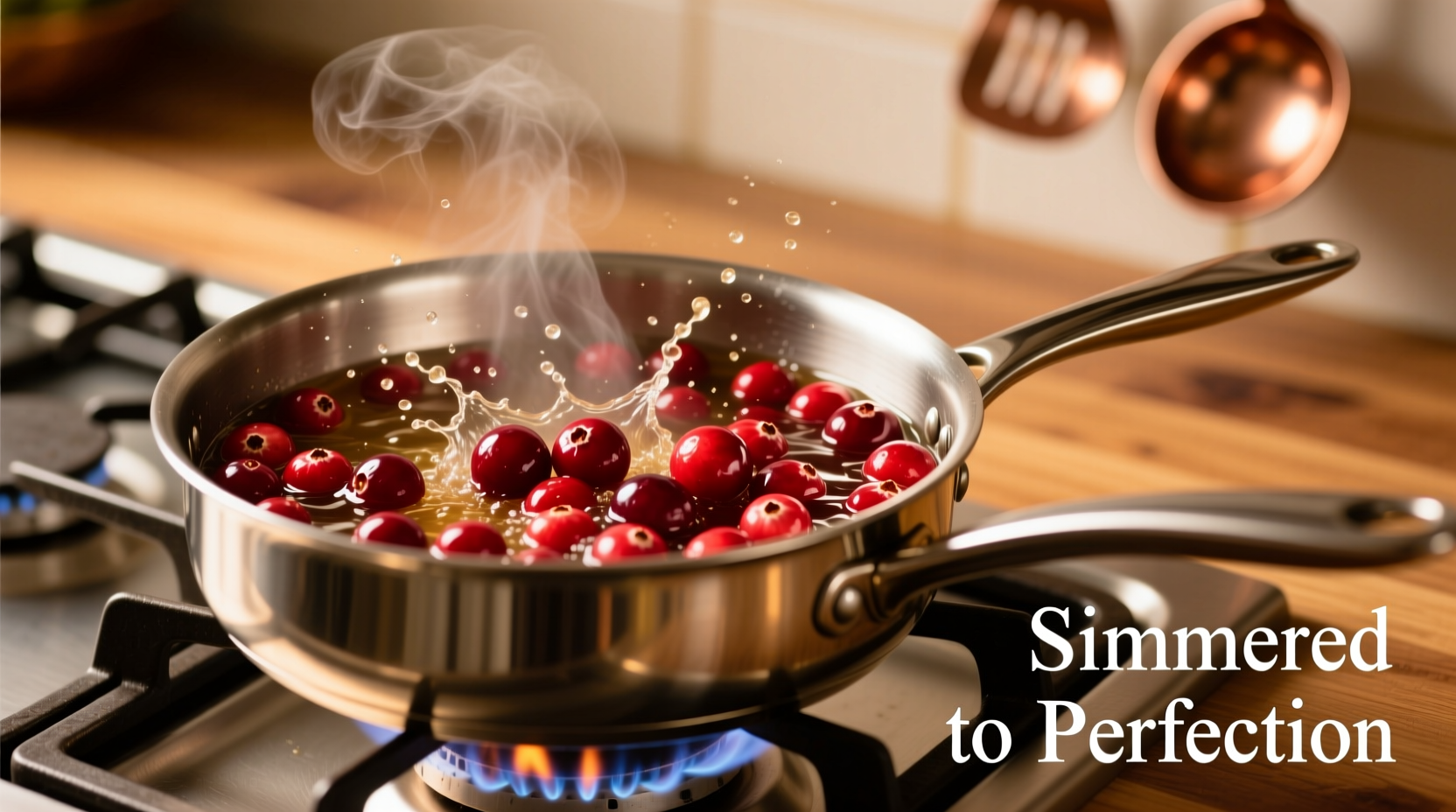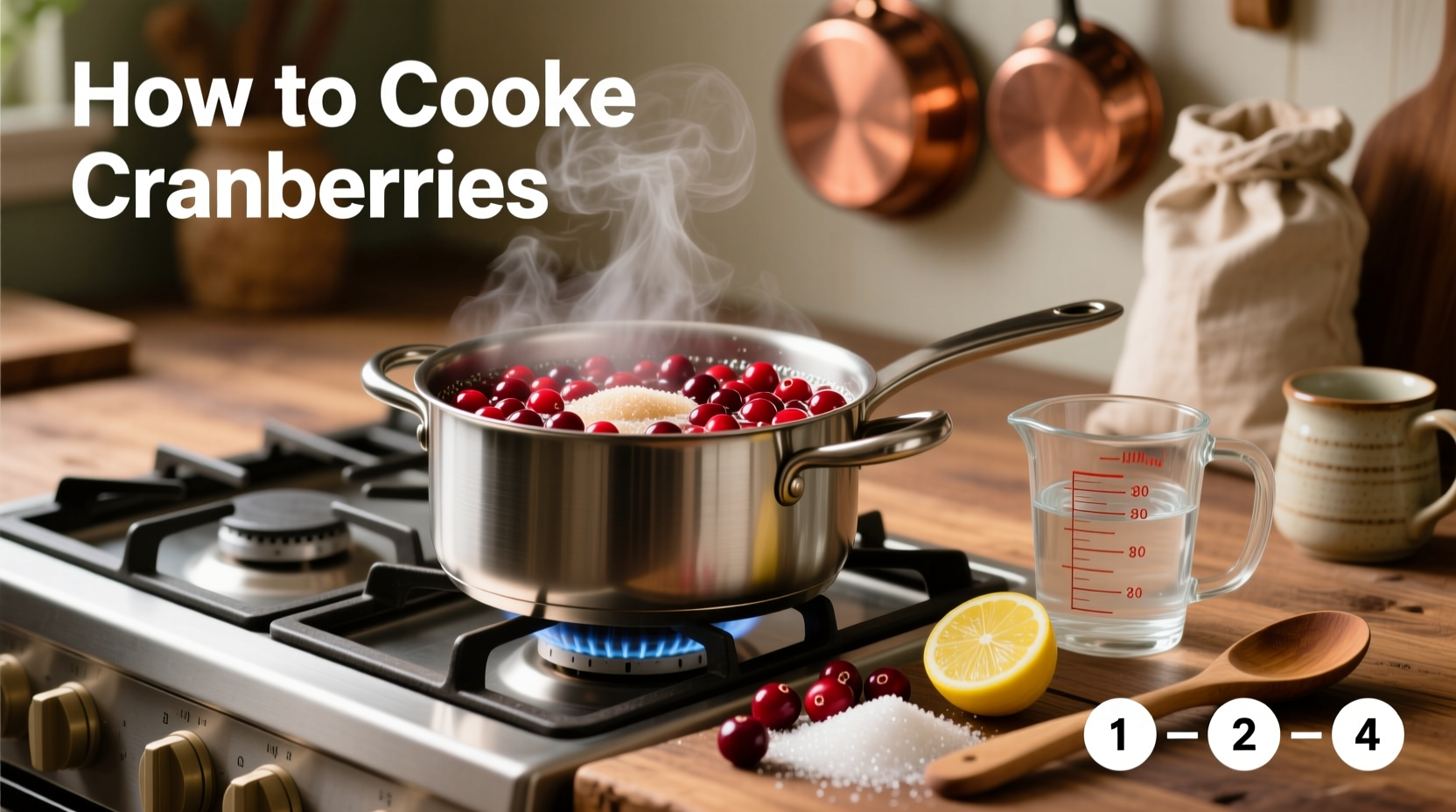Transform tart cranberries into delicious dishes with these proven methods: simmer with sweetener (1:1 ratio with liquid), roast for concentrated flavor, or blend raw for vibrant relish. Properly cooked cranberries should burst but maintain shape, creating that perfect balance of sweet-tart flavor in just 10-15 minutes.
Every fall, home cooks face the same question: how to transform those vibrant red berries from painfully tart to perfectly balanced. As a professional chef who's worked with cranberries in Michelin-starred kitchens and home kitchens alike, I've perfected methods that consistently deliver restaurant-quality results. Whether you're preparing holiday sauce or weeknight relish, understanding cranberry's unique properties is key to unlocking its potential.
Cranberries contain natural pectin and high acidity, which explains why they pop when cooked and pair so well with sweeteners. This scientific understanding informs every technique we'll explore. Forget the common mistake of overcooking into mush—properly prepared cranberries should retain some texture while developing complex flavor.
Why Cranberries Need Special Handling
Unlike most fruits, raw cranberries are too tart for direct consumption due to their high malic acid content (approximately 1.5-2.5% by weight). Their natural defense mechanism creates that signature "pop" when ripe—a sound you'll hear during cooking that indicates perfect timing. Understanding this biological trait prevents the two most common failures: undercooked berries that remain unpleasantly tart or overcooked mush that loses visual appeal.
| Cooking Method | Time Required | Best For | Sweetener Ratio |
|---|---|---|---|
| Basic Simmer | 10-15 minutes | Traditional sauce | 1 cup sugar per 12 oz berries |
| Roasted | 20-25 minutes | Intense flavor applications | 1/2 cup sweetener per 12 oz |
| Raw Relish | 5 minutes | Fresh texture preference | 1/2 cup sweetener per 12 oz |
| Baked | Cooking time + 10 min | Pies and baked goods | 1/3 cup sweetener per 12 oz |
Your Step-by-Step Cranberry Cooking Journey
1. Selecting & Preparing Your Cranberries
Start with quality berries—choose firm, plump cranberries that bounce when dropped (a traditional freshness test used since Native American harvesting). Discard any soft or discolored berries. Rinse thoroughly in cold water, removing any leaves or stems. For best results, use berries within 2-3 days of purchase or freeze for later use (frozen berries work equally well with no thawing needed).

2. The Classic Simmer Method (10 Minutes)
This foundational technique works for sauces, syrups, and bases for other recipes:
- Combine 12 ounces cranberries, 1 cup liquid (water, orange juice, or apple cider), and 1 cup sweetener in a saucepan
- Bring to a gentle boil over medium heat
- Reduce heat and simmer 8-12 minutes until most berries have popped
- Remove from heat and cool—the sauce will thicken as it cools
Pro Tip: Add flavor enhancers during the last 2 minutes of cooking to preserve their volatile compounds: orange zest, cinnamon sticks, or fresh ginger. The University of Maine Cooperative Extension confirms that adding citrus components at the end maximizes flavor retention.
3. Roasted Cranberries (20 Minutes)
For deeper, more complex flavor without added liquid:
- Toss 12 ounces cranberries with 2 tablespoons oil and 1/2 cup sweetener
- Spread on parchment-lined baking sheet
- Roast at 400°F (200°C) for 20-25 minutes, stirring once
- Remove when berries have collapsed but maintain some shape
This method concentrates flavor beautifully for salads, grain bowls, or as a sophisticated side dish. The dry heat caramelizes natural sugars while preserving texture better than simmering.
4. Raw Cranberry Relish (5 Minutes)
For those who prefer fresh texture and bright flavor:
- Process 12 ounces cranberries, 1 orange (peeled), and 1/2 cup sweetener in food processor
- Pulse until desired consistency (small chunks work best)
- Refrigerate at least 2 hours to allow flavors to meld
This no-cook method preserves maximum vitamin C content. According to USDA FoodData Central, raw preparation retains approximately 25% more vitamin C compared to cooked methods.
Avoiding Common Cranberry Cooking Mistakes
Over-sweetening: Start with less sweetener—you can always add more after cooking. The natural tartness is part of cranberry's appeal.
Overcooking: Remove from heat when about 75% of berries have popped. Residual heat continues the cooking process.
Incorrect thickening: Cranberry sauce naturally thickens as it cools. Many beginners add thickeners unnecessarily—patience yields better texture.
Storage & Usage Tips
Properly stored cranberry preparations keep refrigerated for 10-14 days or frozen up to 1 year. For best results:
- Cool completely before storing
- Use airtight containers with minimal headspace
- Press plastic wrap directly on surface to prevent skin formation
Did you know cranberry sauce freezes beautifully in ice cube trays? Once frozen, transfer cubes to freezer bags for portioned use in smoothies, glazes, or quick sauces.
Historical Context: From Native American Staple to Modern Favorite
Cranberries have been used for centuries in North America, with a fascinating evolution in preparation methods:
- Pre-1600s: Native Americans used cranberries fresh, dried, or in pemmican (a mixture of meat, fat, and berries)
- 1600s: European settlers adopted cranberries, creating the first sweetened sauces
- 1810s: First commercial cranberry harvest in Massachusetts
- 1912: Ocean Spray cooperative formed, standardizing processing techniques
- Today: Wisconsin produces over 60% of U.S. cranberries, with modern techniques preserving traditional flavors
This historical timeline, documented by the Wisconsin State Cranberry Growers Association, shows how cooking methods evolved from survival food to culinary staple.
Troubleshooting Your Cranberry Dishes
Too tart? Stir in additional sweetener 1 tablespoon at a time, reheating gently.
Too thin? Simmer uncovered for 2-3 additional minutes or add 1 teaspoon chia seeds to thicken.
Too thick? Whisk in small amounts of liquid (orange juice works best) until desired consistency.
Creative Ways to Use Cooked Cranberries
Move beyond traditional sauce with these professional applications:
- Swirl into yogurt or oatmeal
- Use as a glaze for roasted meats (especially pork or duck)
- Layer in parfaits or trifles
- Blend into vinaigrettes for salads
- Fill thumbprint cookies or danishes
Professional chefs often freeze cranberry sauce in ice cube trays for quick portioning in recipes throughout the year—a technique that maintains flavor integrity better than commercial products.











 浙公网安备
33010002000092号
浙公网安备
33010002000092号 浙B2-20120091-4
浙B2-20120091-4